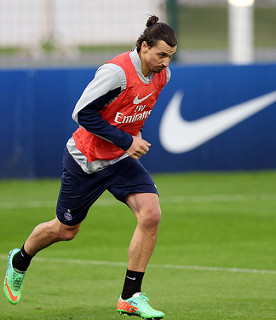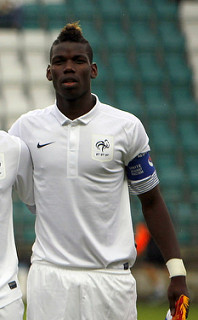Acknowledgement: This article has been adapted from a paper I submitted for a post-graduate course titled Managing Technological Innovation. During my research I had the privilege of interviewing Mark Goddard, former FIFA TMS General Manager. The paper was also reviewed by FIFA TMS management for information accuracy.
New Note 04.08.2017: FIFA TMS is no longer a subsidiary of FIFA and has since been reintegrated into FIFA as the TMS Global Transfers and Compliance department.
In a previous article we looked at how the FIFA Transfer Matching System qualifies as a technological innovation. This article goes further to look at a key aspect on managing technological innovation: technology transfer. We also peer briefly into FIFA TMS Gmbh business model and strategy.
Technology transfer is the process of commercialization or bringing technologies to the marketplace. We can also look at technology transfer in terms of the challenge of taking a concept and then, through collaboration between organisations, achieve the development of a technology that is able to create value either commercially or in some other way.
In this article I delve into how FIFA through its subsidiary FIFA TMS works to create value through the TMS innovation project. This article analyses the TMS technology transfer using the works of David J. Teece (1986) by looking at the fundamental building blocks which must be in place to ensure value delivery, namely: the appropriability regime, complementary assets and the dominant design paradigm. The article will go further and analyse the TMS’s business model using Teece’s later work (Teece 2006; Teece 2010). The article will then look briefly into technology readiness.
Appropriability regime
Teece describes a regime of appropriability as the environmental factors outside of the firm and market structure that determine the innovators ability to capture value from the innovation. The nature of the technology and the efficacy of the legal system stand out as the main determinants of the strength of an innovation’s appropriability regime. We can look at the TMS’s appropriability regime from the standpoint of the FIFA TMS GmbH.
TMS’s strong appropriability is mainly drawn from the legal or institutional framework under which it operates. In October 2010, the International Transfer Matching System (ITMS) developed by FIFA TMS became mandatory for Member Associations and clubs worldwide to use when completing an international professional player transfer. This effectively locked out anyone seeking to create a similar system as it would be of little or no value. It is also important to understand that the football transfer market is unique in terms of its global scale making the comprehensive TMS inapplicable in other sports.
The appropriability regime is further strengthened by the fact the FIFA TMS holds vast amounts of tacit knowledge in its employees who previously worked with FIFA, the parent organisation. It was observed that these employees have a great understanding of the business processes of the transfer market that have been implemented in the TMS. They are therefore invaluable assets to the organisation.
Dominant design paradigm
TMS as a technology does not face much competition due to factors explained above. Therefore the matter of dominant design does not arise with the core innovation, the International Transfer Matching System (ITMS). However, as FIFA TMS GmbH seeks to expand its revenue base in a bid to deliver one of its goals – become a self-funding entity – it has moved into areas where it can face competition. Among FIFA TMS’s product offerings are:
- Domestic Transfer Matching Systems (DTMS) – one limitation of TMS initially was that it only applied to international transfers leaving the domestic market untapped.
 Later FIFA TMS introduced DTMS, a premium product that could be used by national associations and clubs to handle domestic transfers.
Later FIFA TMS introduced DTMS, a premium product that could be used by national associations and clubs to handle domestic transfers.
However, most national football associations already had systems in place, which could slow the adoption of DTMS. At the time of writing only the Dutch Football Association (KNVB) and the Nigeria Football Federation (NFF) had adopted the system. - Global Player Exchange (GPX) – GPX is a comprehensive player database giving clubs market access as well as pre-transfer functionalities to improve their reach, competitiveness and decision-making.
 It also includes real-time communication functionalities for stakeholders in the transfer market. GPX is currently under development.
It also includes real-time communication functionalities for stakeholders in the transfer market. GPX is currently under development. - Intermediary Regulations Tool (IRT) –
IRT is another premium product designed to assist member associations to meet their regulatory obligations as set out in FIFA’s Regulations on Working with Intermediaries. The IRT is integrated with the Transfer Matching System (ITMS and DTMS) so that the transfer of professional players and related intermediary involvement can be managed in one system. To date, ten member associations have purchased the IRT, including Ghana, Portugal, Iraq, South Africa, Australia, Croatia, China, India, Vietnam and Nigeria.
The IRT is integrated with the Transfer Matching System (ITMS and DTMS) so that the transfer of professional players and related intermediary involvement can be managed in one system. To date, ten member associations have purchased the IRT, including Ghana, Portugal, Iraq, South Africa, Australia, Croatia, China, India, Vietnam and Nigeria. - Data Packaging –
 TMS’s use as an analysis tool is quite evident owing to the large amount of information collected and made available to football authorities.
TMS’s use as an analysis tool is quite evident owing to the large amount of information collected and made available to football authorities.
Data from the TMS is packaged at international level subject to local and international data protection laws. Each year, FIFA TMS publishes and sells a ‘Global Transfer Market’ report, ‘highlights’ of which are available online free of charge.
In coming up with this products, FIFA TMS GmbH seeks to gain leadership and stay ahead in the market by ensuring they are the “go to” people for any services related to the transfer market, thus establishing a dominant design. This position is strengthened by the fact the company is a subsidiary of FIFA and therefore has deep knowledge and expertise in the field. If a competitor were to enter the market to compete with FIFA TMS’s service offerings, it would be difficult to penetrate the market. Also, as more and more clubs and national associations employ the technologies, TMS’s position is strengthened.
Complementary Assets

Complementary assets are the capabilities required by an innovator, in this case FIFA TMS, in order to successfully commercialize an innovation. Complementary assets could be required in either the production or distribution process. Teece differentiates complementary assets which are generic, specialized and cospecialized. Complementary assets or capabilities may be owned either by the innovating organisation or by other entities, including customers, in which the innovator has to find a way of acquiring these assets.
Looking at TMS, most of the assets that would be required to successfully commercialize it are generic. Generic assets are general purpose assets which do not need to be tailored to the innovation. For example, TMS and related services require internet access and other computing services and equipment. This would especially be key when targeting markets in developing countries, where access to the internet is still limited hampering the distribution of digital services.
FIFA TMS also employs a hybrid approach for product development, working with external development resources. This allows the company to access complementary assets, including knowledge that internal staff can acquire from the external developers. However, the company ensures that internal staff develop the intellectual property that is critical for business continuity, allowing it to change external support (avoid vendor lock-in). This again highlights that support or complementary assets acquired from external sources are generic in nature. As Teece explains when talking of contractual modes,
“It is important to bear in mind, however, that contractual or partnering strategies in certain cases are ideal. If the innovator’s technology is well protected, and if what the partner has to provide is a generic capacity available from many potential partners, then the innovator will be able to maintain the upper hand while avoiding the costs of duplicating downstream capacity.”
This approach also forms part of FIFA TMS’s business model which we look at next.
Business Model and Strategy
This section looks briefly at FIFA TMS’s business model as outlined in Teece’s papers, “Reflections on Profiting from Innovation” and Business Models, Business Strategy and Innovation. The business model defines how a firm creates value, delivers value and the mechanisms it uses to capture the value.
We have already seen TMS’s hybrid approach to product development. The other important aspect to TMS’s business model is its positioning within the transfer market value chain, that is, the activities involved in the transfer of a player from one association football club. The typical value chain consists of scouting; negotiation, player signing and ultimately playing for his new club.

TMS has identified and developed products and services designed to capture value through the transfer value chain, ensuring TMS is a one-stop shop for all services related to the transfer market.
In so doing they have also recognized developments in the global economy as a result of new communications and computing technology and the establishment of reasonably open global trading regimes altering the traditional balance between customer and supplier. Being in the information/internet industry, TMS has also utilized the freemium business model, where the core service is given free (ITMS is free and mandatory), ensure its adoption by offering free workshops and training to member associations and clubs, and then offering premium priced value added services and products (DTMS, GPX and IRT mentioned earlier).
Technology Readiness
Technology readiness refers to a state where a technology is deemed to be able to be adopted by recipients and be able to deliver the intended value. Technology readiness is assessed at various phases of the innovation project to ensure the project continues to be economically viable. For the TMS technology readiness was determined at the onset when the Task force findings and recommendations were submitted to the FIFA Congress for approval. The congress, which is constituted of the member associations, approved the Transfer Matching concept: 199 For 3 Against.
Further, in 2008 a proof of concept was conducted in which the ability to extract certain aspects of the transfer regulations and build software to support them was tested. There was positive feedback on this, lending more support to the continued development of the system.
FIFA TMS also works with external marketing companies to determine the market need for proposed products or service offerings such as the GPX. Rigorous market research is carried out before and during the development process providing a solid basis to continue with the projects.
Conclusion
It can be concluded that FIFA TMS has done a good job in coming up with a solid business model and strategy to enable it to deliver value propositions that are attractive to its customers and other stakeholders, facilitating great value capture by the business through the generation and delivery of products and services.
Still fully funded by FIFA, it will be interesting to analyse the progress of FIFA TMS GmbH as it has only just started offering its premium products and services to the market. That said the company represents a great innovation with a lot of potential based on its business model, strategy and position in the market. It is important to note that the current controversies surrounding FIFA have not affected the day-to-day running of TMS, but nonetheless these should be analysed closely in order to mitigate any potential risks.
References
Teece, D.J., 2010. Business Models, Business Strategy and Innovation. Long Range Planning, Business Models 43, 172–194. doi:10.1016/j.lrp.2009.07.003
Teece, D.J., 2006. Reflections on “Profiting from Innovation.” Research Policy, Special issue commemorating the 20th Anniversary of David Teece’s article, “Profiting from Innovation”, in Research Policy 35, 1131–1146. doi:10.1016/j.respol.2006.09.009
Teece, D.J., 1986. Profiting from technological innovation: Implications for integration, collaboration, licensing and public policy. Research Policy 15, 285–305. doi:10.1016/0048-7333(86)90027-2
photo credit: Doha Stadium Plus Zlatan Ibrahimovic via photopin (license)
photo credit: theglobalpanorama Paul Pogba via photopin (license)





